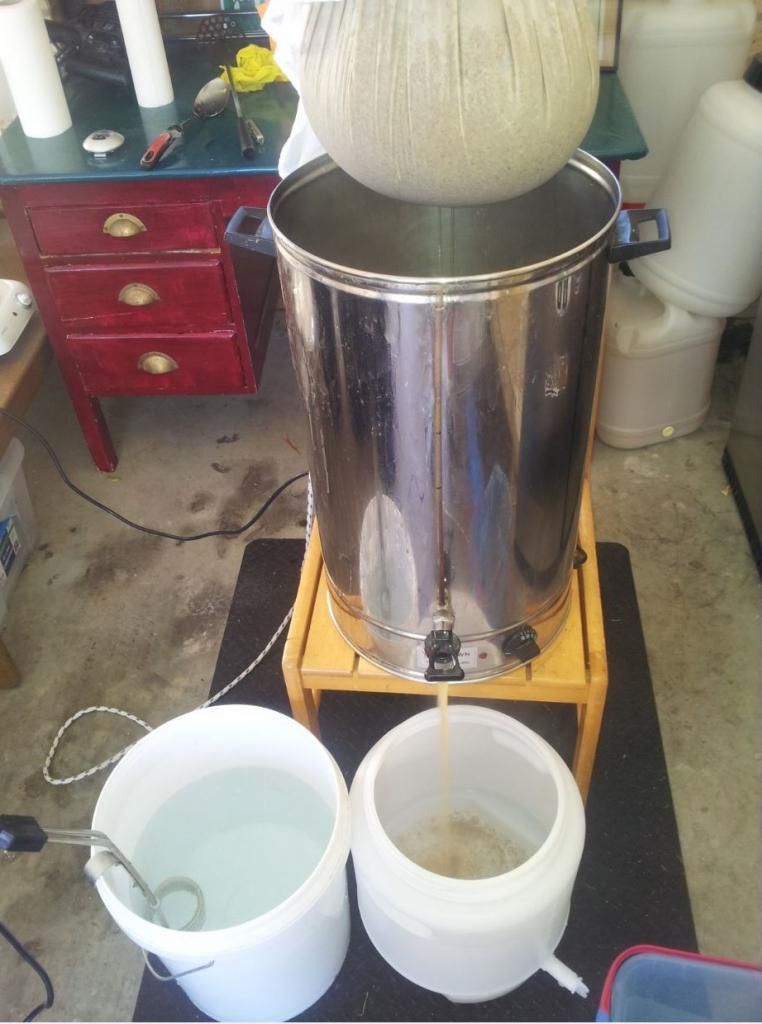The idea of Parti Gyle is to get two worts out of one grain bill, a strong one (first runnings) and a weaker one (second runnings)
Occurs to me that another neat thing you could do with BIAB is to produce two worts with quite different characteristics, but recombine them in the boil.
Why?
I'm intrigued by the idea of doing a high mash above 70 degrees in Alpha Amylase territory and collect that wort and segregate it, then a second mash down around 63 in Beta Amylase territory. I'm using half the normal strike water. Hoist and drain the bag and collect about 12L of strong and dextrinous wort. Heat this to nearly boiling to denature enzymes and run off into a holding vessel . There should still be heaps of goodness left in the mash as it hasn't been sparged out.
Then drop the bag back into the urn, in my case, top up with the other half of the water but mash this for an hour at only 63 degrees, with some extra malt to top up any beta amylase that may have been denatured during the first mash.
Hoist and drain the bag, bring the wort up towards the boil to denature enzymes and pour the first runnings back in and boil and hop as normal.
I'm aiming for a rich dextrinous beer that also has kick, interested to see if it differs in mouthfeel and maltiness from the same grain bill just mashed in the middle at 66 degrees.
Will report.
Timer sounding, gotta dash
